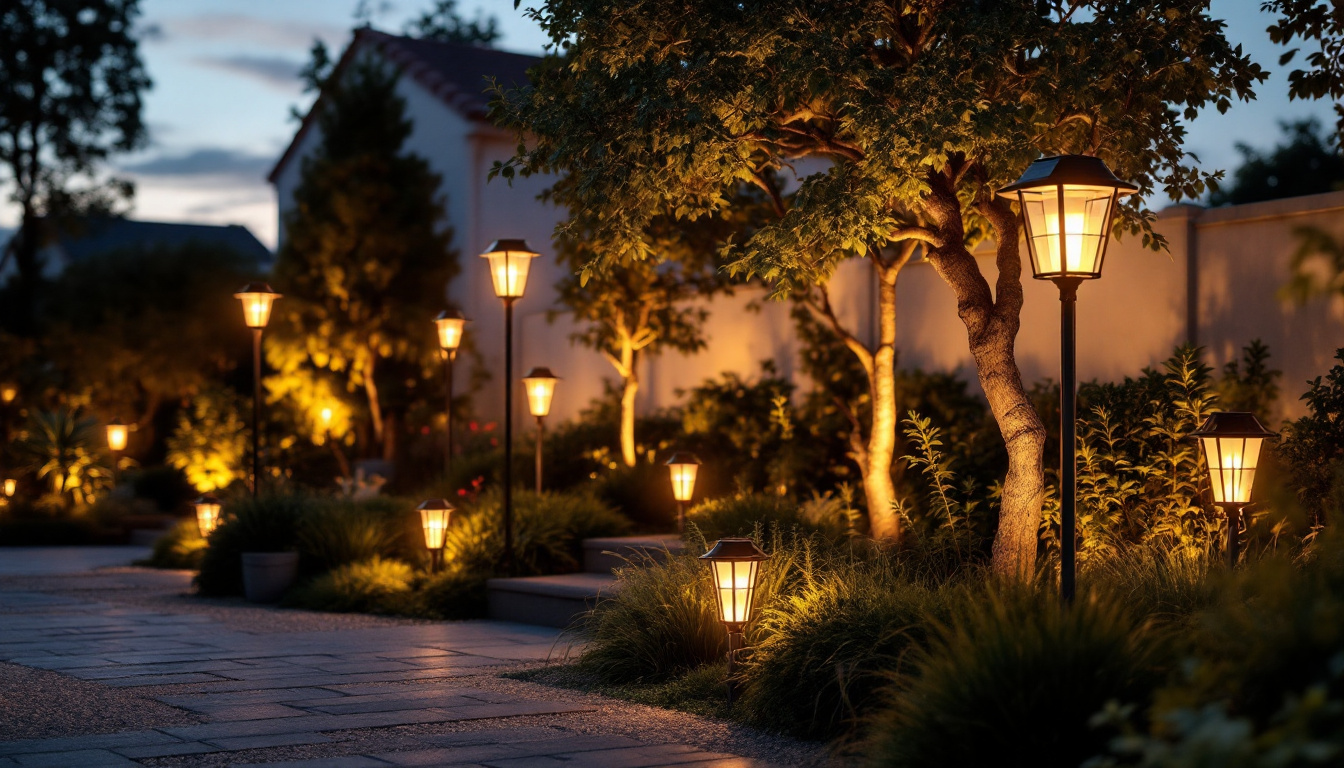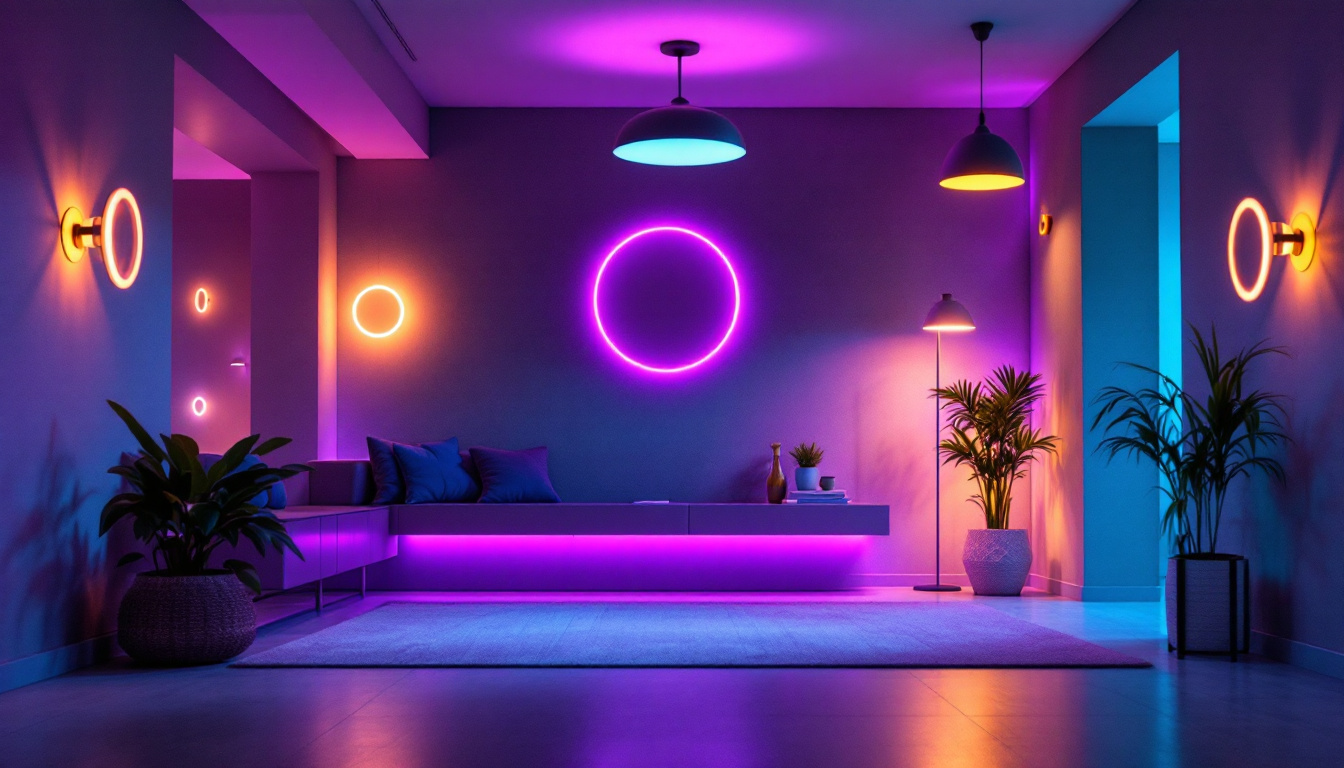
outdoor lighting compliance is a critical aspect that lighting contractors must navigate in their projects. Compliance ensures that lighting installations meet local regulations, safety standards, and environmental considerations. This not only protects the contractor from potential legal issues but also enhances the safety and satisfaction of clients.
Many municipalities have specific codes and standards regarding outdoor lighting. These regulations often address issues such as light pollution, energy efficiency, and safety. Understanding these requirements is essential for contractors to deliver compliant and effective lighting solutions.
Local regulations can vary significantly from one jurisdiction to another. Contractors must familiarize themselves with the specific codes applicable in their area. This may include restrictions on the brightness of lights, the types of fixtures allowed, and the hours during which outdoor lighting can be used.
Failure to comply with these regulations can result in fines, project delays, or even the need to remove or replace non-compliant installations. Therefore, staying informed about local laws is not just beneficial; it is essential for maintaining a reputable business. Additionally, many municipalities offer resources and workshops to help contractors understand these regulations better, which can be a valuable opportunity for networking and professional development.
In addition to local regulations, environmental considerations play a significant role in outdoor lighting compliance. Many regions are now focusing on reducing light pollution, which can disrupt local wildlife and negatively impact human health. Contractors should be aware of the effects of outdoor lighting on the environment and strive to implement solutions that minimize these impacts.
Utilizing fixtures that direct light downward, using warmer color temperatures, and employing timers or sensors to reduce unnecessary lighting are all strategies that can help mitigate light pollution. By being proactive in these areas, contractors can not only comply with regulations but also contribute to sustainable practices. Moreover, adopting energy-efficient technologies, such as LED lighting, can significantly reduce energy consumption and costs, aligning with broader environmental goals. As communities increasingly prioritize sustainability, contractors who embrace these practices will likely find themselves in higher demand, positioning their businesses for future growth.
As lighting contractors delve into outdoor projects, several key compliance areas warrant attention. These areas encompass safety standards, energy efficiency, and aesthetic considerations, all of which play a vital role in successful lighting installations.
Safety is paramount in any lighting installation. Contractors must ensure that all fixtures are installed securely and that electrical components meet safety standards. This includes using weather-resistant materials and ensuring proper grounding to prevent electrical hazards.
Moreover, outdoor lighting should be designed to minimize tripping hazards and ensure visibility in walkways and driveways. Adequate illumination not only enhances safety but also provides peace of mind for clients. In addition to these precautions, contractors should also consider the placement of fixtures to avoid glare that could distract drivers or pedestrians. Utilizing shielding techniques can help direct light where it is needed most while reducing light pollution and enhancing the overall safety of the environment.
Energy efficiency is another critical compliance area. Many regions have adopted energy codes that mandate specific efficiency standards for outdoor lighting. These regulations often encourage the use of LED fixtures, which consume less energy and have a longer lifespan compared to traditional lighting options.
Contractors should be familiar with these energy codes and consider incorporating energy-efficient solutions into their designs. Not only does this help in compliance, but it also appeals to environmentally conscious clients looking to reduce their energy consumption. Furthermore, integrating smart lighting systems that can be controlled remotely or programmed to adjust based on natural light levels can significantly enhance energy efficiency. Such systems not only comply with regulations but also provide clients with the flexibility to manage their outdoor lighting effectively, ensuring that lights are only on when needed.
Aesthetics play a significant role in outdoor lighting projects. While compliance with regulations is essential, the visual appeal of the lighting design is equally important. Contractors must balance compliance with creativity to deliver solutions that enhance the beauty of outdoor spaces.
Understanding the client’s vision and the architectural features of the property can guide the selection of fixtures and placement. Thoughtful design can create inviting outdoor environments while still adhering to compliance standards. Additionally, considering the surrounding landscape and seasonal changes can further enhance the aesthetic appeal. For instance, using fixtures that complement the natural elements, such as trees and shrubs, can create a harmonious blend that highlights the property’s features. Incorporating dimmable options or color-changing LEDs can also allow for versatility in ambiance, catering to different occasions and client preferences while maintaining compliance with local regulations.
Proper documentation and permitting are crucial steps in ensuring compliance for outdoor lighting projects. Contractors should be prepared to provide detailed plans and specifications to local authorities when required. This process can often be time-consuming, but it is vital for avoiding potential complications down the line.
Documentation should include detailed drawings of the lighting layout, specifications for the chosen fixtures, and information on energy consumption. Additionally, contractors may need to provide evidence of compliance with safety standards and any relevant environmental regulations.
Having thorough documentation not only streamlines the permitting process but also serves as a reference for future projects. It can help contractors establish a track record of compliance, which can be beneficial when bidding on new projects.
The permitting process can vary in complexity depending on the jurisdiction. Contractors should be prepared to navigate local government requirements, which may include submitting applications, paying fees, and undergoing inspections.
Establishing a good relationship with local permitting authorities can ease this process. Contractors who are familiar with the local regulations and maintain open communication with officials are often able to expedite the permitting process and address any concerns that may arise.
The landscape of outdoor lighting compliance is continually evolving. New regulations and standards are introduced regularly, driven by advancements in technology and growing environmental concerns. For lighting contractors, staying updated on these changes is essential.
Investing in continuing education and training can help contractors remain informed about the latest compliance requirements. Many industry associations offer workshops, webinars, and certification programs that cover relevant topics, including changes in regulations and best practices for outdoor lighting.
By participating in these educational opportunities, contractors can enhance their knowledge and skills, ensuring they remain competitive in the market while providing compliant solutions to their clients.
Networking with other industry professionals can also be beneficial for staying informed. Engaging with peers, attending trade shows, and participating in local lighting associations can provide valuable insights into emerging trends and regulatory changes.
These connections can foster collaboration and knowledge sharing, helping contractors navigate the complexities of compliance more effectively.
Implementing best practices can significantly enhance compliance efforts for outdoor lighting projects. These practices not only ensure adherence to regulations but also improve the overall quality of installations, leading to satisfied clients and successful projects.
Before commencing any outdoor lighting project, conducting a thorough site assessment is crucial. This assessment should evaluate the specific needs of the space, including existing features, potential hazards, and the desired aesthetic outcome.
By understanding the unique characteristics of the site, contractors can design lighting solutions that are both compliant and effective. This proactive approach minimizes the risk of non-compliance and enhances the overall success of the project.
Technology can play a significant role in ensuring compliance with outdoor lighting regulations. Utilizing software tools for design and planning can help contractors visualize their projects and assess compliance with local codes more effectively.
Additionally, smart lighting solutions, such as automated controls and sensors, can help manage energy consumption and reduce light pollution. By incorporating these technologies, contractors can enhance compliance while providing innovative solutions to clients.
Effective communication with clients is a vital component of ensuring compliance in outdoor lighting projects. Contractors should engage clients in discussions about compliance requirements, project goals, and design options from the outset.
Setting clear expectations with clients regarding compliance can prevent misunderstandings and ensure that everyone is on the same page. Contractors should explain the importance of adhering to local regulations and how it impacts the project timeline and budget.
By fostering open communication, contractors can build trust with clients and create a collaborative environment that encourages feedback and input throughout the project.
Educating clients about compliance requirements can empower them to make informed decisions regarding their outdoor lighting projects. Providing information on local regulations, energy efficiency options, and the benefits of compliant lighting solutions can enhance the client’s understanding and appreciation of the project.
When clients are well-informed, they are more likely to support compliance efforts and appreciate the value of the contractor’s expertise.
Outdoor lighting compliance is a multifaceted aspect that lighting contractors must navigate carefully. By understanding local regulations, focusing on safety and energy efficiency, and maintaining thorough documentation, contractors can ensure successful project outcomes.
Staying updated on compliance changes through continuing education and networking, along with implementing best practices, will further enhance a contractor’s ability to deliver compliant and aesthetically pleasing outdoor lighting solutions.
Ultimately, effective client communication plays a crucial role in fostering a collaborative environment that prioritizes compliance. By engaging clients in the process and educating them about the importance of adherence to regulations, contractors can build lasting relationships and ensure the success of their outdoor lighting projects.
Ready to elevate your outdoor lighting projects with compliance and style? Look no further than LumenWholesale for all your lighting needs. Our extensive selection of spec-grade lighting products is designed to meet the highest industry standards, ensuring that your installations are not only compliant but also deliver exceptional performance. With unbeatable wholesale prices and the convenience of free shipping on bulk orders, you can provide your clients with premium lighting solutions that blend quality, affordability, and convenience. Don’t let hidden fees or inflated markups dim your project’s potential. Choose LumenWholesale for Wholesale Lighting at the Best Value and light up your clients’ spaces with confidence.

Discover the ultimate guide to LED can lights with our comprehensive article.

Discover the top outdoor solar lamps that combine sustainability with style, ensuring your lighting projects are both eco-friendly and future-proof.

Discover the transformative impact of LED lighting fixtures in the modern lighting industry.

Discover how ceiling chain lights can revolutionize the workflow of lighting contractors.